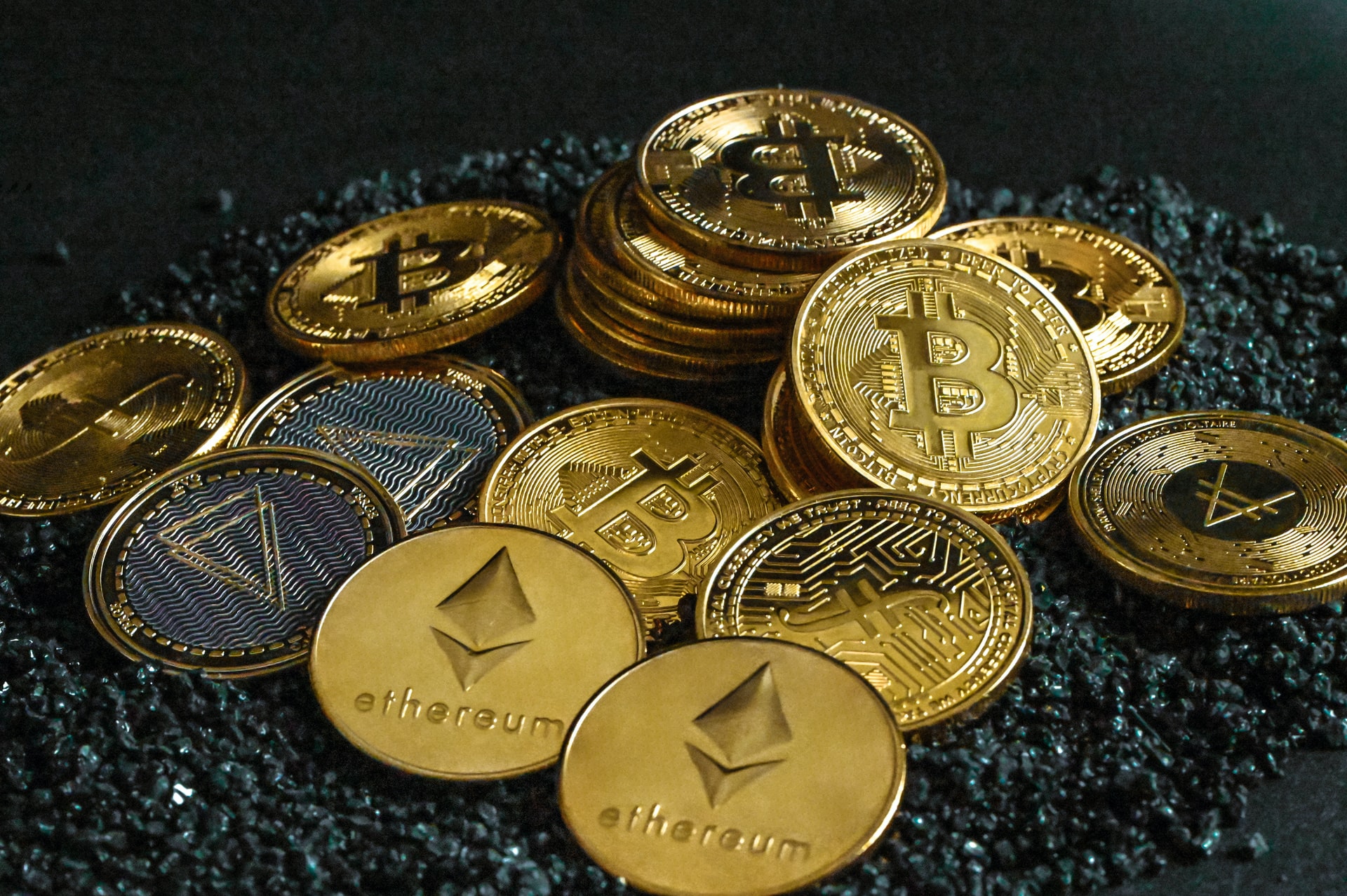Crypto holders can select from over 18,000 digital currencies, but each crypto fits within a category. Some cryptocurrencies can provide astonishing returns, while others can result in considerable losses. Crypto is a high-risk, high-reward asset that may make sense for your portfolio. We’ll discuss the different types of cryptocurrencies you can choose from and how to build your crypto portfolio.
Types Of Cryptocurrencies
Categorizing different types of cryptocurrencies provides extra background information to help investors make better decisions. You can invest in these assets in the crypto market.
Coins
Bitcoin is the most established cryptocurrency. Many merchants accept it as a form of payment, and every crypto exchange lists Bitcoin. Most people learn about crypto through Bitcoin and invest in this asset before dabbling in altcoins.
Altcoins
Altcoins are any cryptocurrencies not named Bitcoin. Ethereum is the most well-known altcoin, and some investors believe it can surpass Bitcoin in the future. Bitcoin and altcoins each use independent blockchain technology instead of relying on another entity for their blockchain. Altcoins have smaller market caps and a more comprehensive range of rules. Getting into the right altcoin can produce returns similar to those you could have earned as an early Bitcoin adopter. However, these currencies are not as established as Bitcoin and may rely too much on investor hype. You’ll have to be more careful if you buy altcoins. Most investors select between two altcoins:
- Stablecoins: These crypto assets derive value from a stable asset like the U.S. dollar. These assets reduce volatility and simplify international money transfers.
- Memecoins: Anyone can create a cryptocurrency, and some people use memes as inspiration. Dogecoin and Shiba Inu each feature memes on their coin faces. These coins start as humorous ideas, but some of these coins have produced generational returns for early investors.
Tokens
Tokens are traceable cryptocurrencies that rely on an outside blockchain. For example, many tokens rely on the Ethereum blockchain to facilitate transactions. Investors can choose from several types of tokens.
- Utility Tokens: These tokens let users buy goods and services on the blockchain. You can use Filecoin to purchase storage space on a decentralized blockchain. Some people like decentralized storage because it adds more protection. Hackers who get into DropBox may gain access to your files. Decentralized file storage protects you from this type of attack.
- Governance Tokens: These tokens let you vote on important decisions for the blockchain’s future. Most stocks let you make a vote on the company’s initiatives. Governance tokens follow the same approach as crypto. You’ll get to vote once for each token you own.
- Security Token: These tokens help you claim ownership over an asset. Security tokens cannot be erased or modified by a central authority.
The Most Common Cryptocurrencies
Crypto enthusiasts can browse through over 18,000 cryptocurrencies. However, investors incur a greater risk by selecting less established cryptocurrencies. Some cryptocurrencies have become household names and are available on many cryptocurrency exchanges.
1. Bitcoin (BTC)
Bitcoin is the original cryptocurrency that remains a fan favorite. It’s received the most media and merchant adoption. You can buy Bitcoin with many mobile banking apps, and thousands of merchants accept Bitcoin payments. You can also use a loophole with Bitcoin and other cryptos to purchase gift cards if the company doesn’t accept crypto. Bitcoin has been a roller coaster since its debut. The cryptocurrency jumped over 2,000% in 2017 and lost 80% of its value in 2018. The asset recovered those losses in 2021 and is currently down more than 50% from its all-time high. Some crypto bulls point to Bitcoin’s supply of 21 million coins as an inflation hedge.
2. Ethereum (ETH)
Ethereum is the second-largest cryptocurrency platform. Its currency, Ether, facilitates smart contracts. These contracts simplify agreements across all parties and eliminate the need for a middleman. Taking the middleman out of the equation reduces fees. Unlike Bitcoin, Ethereum has an infinite supply.
3. Cardano (ADA)
Cardano has gained momentum in recent years due to its proof-of-stake model. Proof-of-stake is substantially less harmful to the environment than Bitcoin and other proof-of-work cryptocurrencies. Crypto miners don’t need warehouses filled with computers to obtain new Cardano. This structure also provides faster transactions than Bitcoin.
4. Binance Coin (BNB)
Binance is the world’s largest crypto exchange. The company decided to release its own cryptocurrency and named it Binance Coin. Users pay lower transaction fees if they use BNB to purchase other cryptocurrencies. This feature has led to the widespread adoption of Binance Coin by people using the Binance exchange. Periodically, some Binance coins get destroyed to keep the price stable.
5. Tether (USDT)
Tether is a stable coin tied to stable assets. The objective of this dynamic is to reduce volatility within crypto assets. Some people flock to stablecoins because they like cryptocurrencies but can’t deal with the volatility. However, some people question the validity of Tether’s model. These critics worry Tether isn’t accurately pegged to stable currencies and presents the same risks as other cryptocurrencies.
6. Solana (SOL)
Solana has its own blockchain and can process over 50,000 transactions per second. Anatoly Yakovenko founded the currency in 2017 as an Ethereum rival. Some people believe Solana’s modern blockchain can topple Ether in the future. In addition, it’s more affordable and faster to use Solana than Ethereum.
7. Ripple (XRP)
Ripple is best suited for banks as it helps facilitate international payments. XRP translates into cheaper conversion costs between fiat currencies. The average XRP transaction fee is $0.0002, making it more affordable than other options. Individuals use XRP to transfer money and avoid fees from financial institutions. Transactions get settled in under five seconds.
8. Dogecoin (DOGE)
This meme coin took many investors by surprise in 2021. Some investors went from rags to riches in a matter of months, inspiring many to jump on FOMO rallies. Despite starting as a meme, Dogecoin has received mainstream attention. Thousands of merchants and companies accept Dogecoin payments. However, Dogecoin has a relatively low market capitalization compared to crypto coins.
9. Polkadot (DOT)
Polkadot aims to make the blockchain more accessible to users. Gavin Wood, the former co-founder and CTO of Ethereum, launched this cryptocurrency to address Ethereum’s flaws. The crypto platforms enable blockchain scalability, making it easier for developers to build their own blockchains.
10. USD (USDC)
USDC is a stablecoin with more transparency than Tether. USDC lets people withdraw funds and receive an equivalent amount of cash in exchange.






